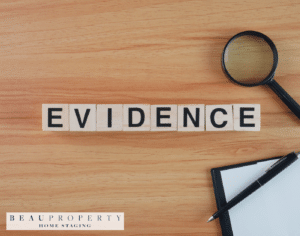Understanding Buyer Objections
What is a Sales Objection?
A sales objection is an explicit expression by a buyer that signals a barrier between their current situation and what needs to be resolved before they can commit to a purchase. In simpler terms, it is a clear indication that more work is needed in the selling process to address specific concerns raised by the prospect.
Importance of Addressing Objections Effectively
Handling objections effectively is critical in sales because it provides the opportunity to resolve a prospect’s concerns, build trust, and ultimately move the deal forward. Ignoring or inadequately addressing objections can lead to lost deals and eroded trust. By proactively addressing concerns, sales professionals can alleviate or eliminate the prospect’s doubts and foster a strong foundation of confidence in the solution being offered.
Types of Objections: Need, Urgency, Trust, and Money
Understanding the four main types of objections can help salespeople prepare and address them more effectively.
Need
A lack of need occurs when a prospect does not see a requirement for your product or service. This objection often means that the prospect does not perceive the value or relevance of what is being offered. Addressing this type involves clearly articulating how your solution meets their specific pain points.
Urgency
A lack of urgency indicates that the prospect does not feel a pressing need to make a purchase right away. They might be interested but feel no rush to act. Overcoming this objection typically involves creating a sense of urgency by highlighting time-sensitive benefits or potential repercussions of delaying the decision.
Trust
Lack of trust is a critical barrier, as it means the prospect is not confident in your product, company, or you as the salesperson. Building trust involves demonstrating credibility, reliability, and expertise through testimonials, case studies, and transparent communication.
Money
A lack of financial capability or perceived high cost is one of the most common objections. Prospects may genuinely lack the budget or believe that the cost outweighs the benefits. Addressing this objection requires demonstrating the return on investment, offering flexible payment options, or showing the long-term cost savings your solution provides.
Understanding these fundamental types of objections is the first step in mastering objection handling. Addressing each type with tailored strategies will help in effectively moving prospects closer to a buying decision. This sets the stage for the next step: mastering the art of active listening in sales conversations.
Active Listening: The Foundation of Objection Handling
The Importance of Listening Fully to the Objection
Active listening is critical when handling sales objections. It is more than just hearing the words your prospect says; it involves understanding the emotion and context behind those words. Effective listening ensures mutual understanding, helping to identify the core of the buyer’s concerns. By doing so, sales professionals can address the actual objection rather than assuming its nature, thus fostering a more transparent and trusting dialogue.
Techniques for Active Listening in Sales Conversations
Several techniques can enhance active listening skills:
- Limit Interruptions: Allow the prospect to speak without interruptions. This shows respect and helps gather comprehensive insights into their concerns.
- Confirm Understanding: Paraphrasing and summarising the prospect’s objections can ensure that you have understood their points accurately. For example, stating, “So what I hear you saying is…” can be effective.
- Non-verbal Cues: Maintain eye contact, nod, and use facial expressions that convey attentiveness. These cues show that you are engaged in the conversation.
- Ask Open-Ended Questions: Encourage the prospect to elaborate on their points with questions that require more than a yes or no answer, such as “Can you tell me more about why that concerns you?” This approach provides deeper insights into their perspective.
Avoiding Defensive Reactions to Objections
Reacting defensively to objections can escalate tension and deter productive conversations. Instead, maintaining a calm demeanor is essential. Here are strategies to manage this:
- Stay Calm: Keep emotions in check and focus on understanding the objection rather than defending your position.
- Acknowledge Concerns: Show empathy by acknowledging the prospect’s feelings. Phrases like “I understand why that might be a concern” can be effective.
- Clarify Ambiguities: Ensure that you fully understand the objection before responding. Misunderstanding an objection can lead to unnecessary defensiveness and further complications.
Active listening is the cornerstone of effective objection handling. It lays the groundwork for addressing concerns in a thoughtful and empathetic manner, which builds trust and moves the conversation forward productively. By incorporating these techniques, sales professionals can transform objections into opportunities for deeper engagement and resolution.
Empathy and Validation: Building Trust with Buyers
Highlighting the Role of Empathy
Empathy in sales is the ability to understand and share the feelings and perspectives of the buyer. By respecting and understanding the customer’s viewpoint, a salesperson can build trust and foster a healthy relationship, which significantly enhances the likelihood of closing a sale. Empathy in sales is not about agreeable nods; it’s about genuinely acknowledging buyers’ emotions and concerns. When sales professionals demonstrate empathy, they position themselves as trusted advisors rather than mere vendors.
Techniques for Validating the Prospect’s Perspective
Validation involves acknowledging and appreciating the buyer’s perspectives and emotions, even if there’s disagreement. Here are some techniques for validating the prospect’s perspective:
- Paraphrasing: Reflect back what the prospect says to show understanding. For instance, “If I understand correctly, you’re concerned about the implementation timeline?”
- Mirroring: This involves repeating the last few words or the critical part of the prospect’s statement, prompting them to expand their thoughts.
- Summarising: Summarise what the buyer has shared to confirm your understanding and to show that you value their input.
- Acknowledgement Phrases: Use phrases like “I see why you’d feel that way” or “That’s a valid concern” to affirm their perspective.
Building Rapport and Trust During Objection Handling
Building rapport is crucial in overcoming objections. Trust development is long-term but begins with every interaction. Here are key strategies:
- Active Listening: Give full attention to the prospect’s words, tones, and non-verbal cues. Avoid interrupting and ensure your listening is evident through nods and appropriate eye contact.
- Authenticity: Be genuine and transparent in your communications. Share personal stories related to your product or service to humanise the interaction and foster a trustful environment.
- Empathetic Responses: React to objections with empathy. For example, if a buyer raises a concern about price, acknowledge their financial limits and discuss value instead of merely justifying the cost.
- Consistency: Follow through on promises and commitments. Reliable actions, such as sending timely follow-up emails or delivering promised information, cement trust over time.
Empathy and validation are stepping stones to successful objection handling. By adopting these strategies, sales professionals can navigate objections more effectively, making the buyer feel seen, heard, and respected. This approach not only resolves immediate concerns but also lays the foundation for a strong, trust-based relationship that can turn a skeptical prospect into a loyal customer.
Henceforth, understanding deeper layers of buyer objections and effectively handling them can turn potentially negative interactions into growth opportunities for the sales relationship. Moving forward, the focus shifts to unearthing the core issues behind objections, emphasising the significance of asking probing questions.
Probing Questions: Uncovering the Real Objection
The Importance of Asking Follow-Up Questions
Effective probing is essential in sales conversations to uncover the true nature of buyer objections. Asking follow-up questions allows sales professionals to delve deeper into the concerns raised by prospects. Without these questions, it is challenging to address the core issues that hinder a purchase decision.
Follow-up questions help build a comprehensive understanding of the buyer’s objections. They ensure that sales reps don’t prematurely address a superficial concern, missing the underlying issue altogether. When done correctly, probing questions can guide the prospect to reveal critical information about their needs and concerns, enabling tailored solutions that effectively address their challenges.
Techniques for Identifying Underlying Issues
Several techniques can aid in identifying the real objections concealed behind initial statements:
- Active Listening: Pay close attention to what the prospect says and doesn’t say. Often, the hesitation or tone of voice can provide clues about deeper concerns.
- Open-Ended Questions: Encourage prospects to elaborate. Questions like, “Can you tell me more about that?” or “Why is this a concern for you?” can offer insights into the real issues.
- Clarifying Questions: Follow up on vague responses to gain clarity. For example, “When you say ‘not ready,’ what specific factors are causing the hesitation?” helps uncover specific roadblocks.
- Reflecting and Paraphrasing: Reflect back what the prospect has said to confirm understanding. This might involve saying, “So, if I understand correctly, you’re concerned about…?” It helps ensure that you and the prospect are on the same page.
- Sequencing Questions: Use a series of interrelated questions to drill down into the specifics. This method often reveals the root cause of the objection that wasn’t immediately apparent.
Examples of Effective Probing Questions
To effectively uncover the true objections, here are some sample probing questions that can be utilised:
- “Why do you think that is?”
- “What sort of impact do you think this will have?”
- “What would need to change for you to accomplish this?”
- “Do you feel that this is right?”
- “When have you done something like this before?”
- “What does this remind you of?”
- “How did you come to this decision?”
These questions encourage prospects to think deeply about their concerns and articulate them more clearly. As they respond, sales reps can gather crucial information that would otherwise remain obscure.
Once sales reps have a clearer picture of the underlying issues, they can tailor their responses and solutions more effectively, aligning them with the prospect’s genuine needs and concerns.
By mastering the art of asking follow-up and probing questions, sales professionals can bridge gaps in understanding, build stronger relationships, and ultimately close more deals. Successfully addressed objections not only pave the way for a purchase but also reinforce the buyer’s confidence in the decision-making process.
Reframing Objections: Turning Challenges into Opportunities
Sales objections can often seem like roadblocks, but a skillful sales professional knows how to turn these challenges into opportunities. Reframing objections involves shifting the prospect’s perspective on their concerns and presenting them as solvable problems. This technique not only helps address the buyer’s worries but also positions the salesperson as a problem solver who can offer valuable solutions.
Introducing the Concept of Reframing
Reframing is the process of altering how someone perceives an objection, changing its context to highlight potential benefits. This essentially involves viewing the objection from a different angle. For instance, if a buyer says, “Your product is too expensive,” the salesperson might reframe it by discussing the long-term value and return on investment (ROI).
Techniques for Repositioning Objections as Solvable Problems
Effective reframing requires specific techniques to ensure that objections are addressed constructively:
- Acknowledge and Validate: Start by acknowledging the prospect’s concern and validating their viewpoint. This shows empathy and establishes trust.
“I understand that cost is a significant concern for you. Many of our clients shared the same initial thought.” - Rephrase the Objection: Rearticulate the objection to highlight its solvable aspects. By doing this, the salesperson can steer the conversation towards potential solutions.
“Instead of focusing solely on the initial investment, let’s consider how this solution can save costs over time.” - Utilise the Boomerang Method: This technique involves turning the objection back to the prospect as a reason for purchasing.
“Yes, the price is higher, but isn’t it worth investing in a solution that will save you more money in the long run?” - Highlight the Solution’s Benefits: Leverage the product’s benefits that specifically address the objection. Tying these benefits directly to the prospect’s needs can be very persuasive.
“While the upfront cost is higher, our product includes features that will streamline your processes, ultimately saving you time and reducing operational costs.”
Examples of Effective Reframing Strategies
To illustrate these techniques, consider the following scenarios:
- Objection: “Your product is too expensive.”
Reframed: “I understand budget constraints are essential. However, our solution is designed to provide a higher ROI by reducing other associated costs such as maintenance and downtime.” - Objection: “We don’t need this product right now.”
Reframed: “I hear you. Many of our clients felt the same but found that implementing our solution early helped them stay ahead of industry changes and avoid more significant issues down the line.” - Objection: “We’re satisfied with our current provider.”
Reframed: “It’s great to hear you’re happy with your current provider. How have they been assisting with recent changes in the market? We’ve found that our clients benefit from our proactive approach and industry-specific expertise.”
By employing these reframing techniques, sales professionals can address objections positively and pave the way for more productive conversations. This approach not only mitigates concerns but can also enhance the perceived value of the solution being offered.
Following this strategy guarantees a smoother transition through buyer objections, setting the stage for a stronger, more trusting buyer-seller relationship.
Providing Evidence: Addressing Objections with Proof
The Importance of Using Social Proof and Case Studies
One of the most effective ways to address buyer objections is through social proof and case studies. Social proof shows potential buyers that other people, particularly those similar to them, have successfully used and benefited from your product or service. It can come in several forms:
- Customer Reviews and Testimonials: Positive feedback from happy customers can be compelling. Whether showcased on your website or social media, these snippets build credibility and trust.
- Influencer Endorsements: Collaborating with industry influencers can provide an authoritative endorsement, impacting prospects significantly.
- Case Studies: Detailed stories that illustrate how your product solved specific problems for clients resonate deeply with potential buyers. They see real-life examples of success, making your product’s value more tangible.
Leveraging Data and Statistics
Quantitative data can help persuade skeptical buyers by providing hard facts and figures. Numbers are compelling because they are concrete and hard to refute. Here’s how you can leverage data and statistics:
- Performance Metrics: Show measurable improvements that users have experienced, such as a 25% increase in productivity or a 40% reduction in costs.
- Survey Results: Present data from satisfaction surveys or studies that support the benefits of your product.
- Industry Reports: Use data from recognised industry bodies or market research firms to validate your claims.
Leveraging historical and real-time data allows businesses to make informed decisions, guiding effective strategies and initiatives.
The Role of Product Demonstrations and Trials
Sometimes, seeing is believing. Product demonstrations and trials can break down exhibits of skepticism by allowing prospects to experience firsthand the benefits your product offers.
- Live Demonstrations: Walk prospects through your product’s features in a live setting. This allows them to ask questions and see the product in action.
- Free Trials and Pilot Programs: Offering a trial period lets prospects test the product in their environment. This hands-on experience can alleviate concerns about usability, effectiveness, and overall fit.
Objections during product demos indicate that the prospect is seriously evaluating every scenario before making a purchase, so it’s crucial to nail this presentation.
Using these methods to address objections fosters trust and confidence in your product. A solid foundation of proof not only alleviates objections but also enhances the buyer’s belief in the value you offer.
By focusing on evidence-based arguments and real-world validations, you can turn objections into stepping stones for moving forward in the sales process.
Following Up: Ensuring Objection Resolution and Moving Forward
Confirming Objection Resolution
Addressing buyer objections is an ongoing process, and confirming that objections have been fully resolved is crucial. After handling an objection, it’s essential to circle back with the prospect to ensure their concerns have been adequately addressed. This can be as simple as asking, “Does that answer your question?” or “Is there anything else you’d like to discuss?” These questions reassure the prospect that their concerns are taken seriously and that you’re committed to meeting their needs.
Techniques for Creating Urgency
Creating a sense of urgency is key to moving the sale forward. Here are several techniques to encourage prospects to take action:
- Highlighting Consequences: Ask questions like, “What will happen if you don’t address this issue now?” or “How will delaying this decision impact your business?” These questions help prospects understand the implications of inaction.
- Scarcity: Use phrases like, “This offer is available for a limited time,” or, “We have a few spots left this month for implementation.” The idea is to create a sense of scarcity, prompting the prospect to act swiftly.
- Price Increase: Mentioning an upcoming price increase can spur action. For example, “Our prices will go up next quarter; buying now will save you money” can be a powerful motivator.
- Social Proof: Share testimonials or success stories from similar clients to show that others have benefited from acting quickly. For instance, “Our client X saw a 20% increase in efficiency after implementing our solution within a month”.
Role of Follow-Up Communication
Follow-up communication is vital for ensuring that objections are resolved and moving the sale forward. Here are some effective follow-up strategies:
- Scheduled Follow-Ups: Schedule your follow-up interactions after addressing objections to maintain momentum. For example, “Let’s catch up next week to see how you feel about the solution” can help keep the dialogue open.
- Personalised Emails: Send personalised emails summarising your discussion and highlight how your product addresses their specific needs. Including client testimonials or case studies can further reinforce your points.
- Meeting Reminders: Use calendar reminders to ensure both you and the prospect remember scheduled follow-ups. This signals professionalism and commitment.
- Continuous Value Addition: Share additional, relevant content even after initial objections have been handled. This could include white papers, blog posts, or product updates that may interest your prospect.
By confirming objections are resolved, creating urgency, and maintaining consistent follow-up communication, you can effectively guide prospects towards making a purchase decision. This dynamic approach not only addresses their concerns but also nurtures the relationship, ensuring a smooth progression through the sales process.








